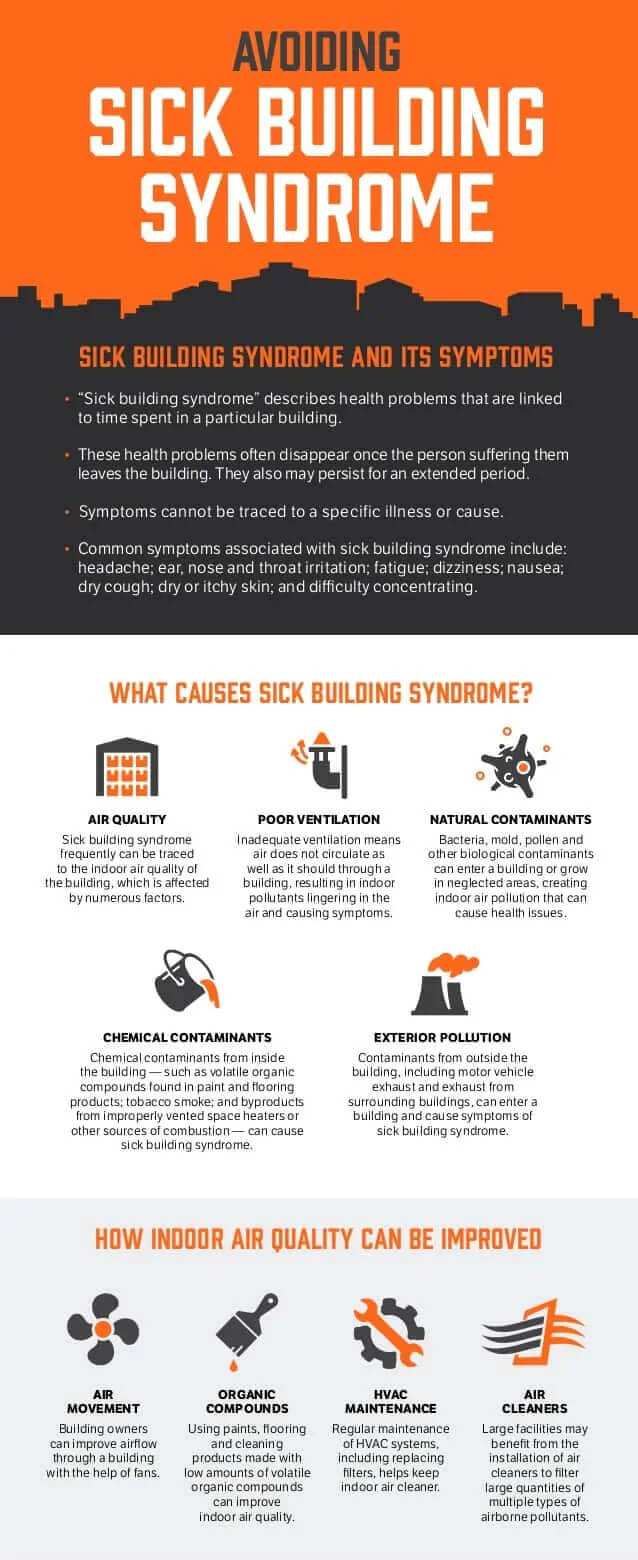Do your employees take frequent sick days or complain often that they don’t feel well at work? Sick building syndrome — or more technically, building related illness (BRI) —could be why. Once scoffed at, this phenomenon has become widespread enough that most medical and building performance experts now acknowledge it as real. The consequences in terms of lost productivity and worker health are very real indeed.
WHAT IS SICK BUILDING SYNDROME?
Sick building syndrome is a term used to describe uncomfortable symptoms that appear to result from time spent in a particular building. These symptoms may be associated with a part of the building, or the entire structure. No specific illness is diagnosed, and no specific cause can be determined. (This is because as soon as a cause is identified, it gets labeled as something else, such as Legionnaires’ disease or mold.)
Since building related illness occurs more frequently in newer or renovated buildings, it is thought to be related to modern building materials and/or techniques. These include paints, composites and plastics that can off-gas chemicals into the interior environment; and construction techniques designed to limit air flow in order to prevent heat loss or gain.



